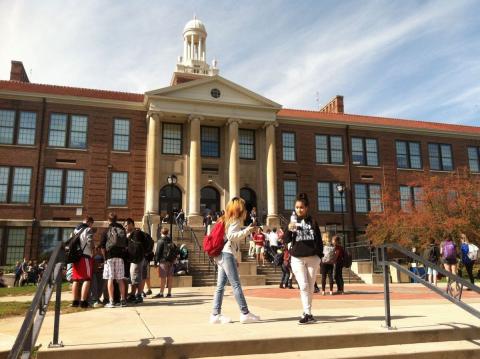
Labor-HHS-Education Bill Moves in the Senate
On Thursday, June 9, the Senate Appropriations Committee passed (29-1) the FY17 Labor, Health and Human Services and Education (Labor-HHS-Ed) spending bill, the first bipartisan Labor-HHS-Ed bill in seven years. The measure would provide $161.9 billion in discretionary (annually appropriated) funding, $270 million below FY16 levels and $2 billion below President Obama’s request. The Department of Labor would receive $12 billion, $134 million below FY16. The Department of Health and Human Services would receive $76.9 billion, a $1.4 billion over current year spending. The Department of Education would receive $67.8 billion, a $220 million cut from current levels.
Reactions from advocates were mixed. Advocates were pleased that no ideological riders were included. The bill restores year-round Pell Grant eligibility for the 2017-2018 school year. Apprenticeship Grants received a $10 million (10 percent) bump, up to $100 million. Support for homeless students increased by $7 million to $77 million. Special education IDEA grants to states to support education for children with disabilities would increase by $40 million over FY16 to $11.95 billion
However, a $2 billion increase in funding for the National Institutes of Health (up to $34 billion) meant that many other programs were cut, level-funded, or received only nominal increases. The Low Income Home Energy Assistance Program (LIHEAP) received level funding compared to FY16, as did the YouthBuild program and preschool development grants.
Among the cuts are a $117 million cut to afterschool programs and a $118 million cut to the Centers for Disease Control and Prevention (CDC), though at $7.1 billion, it’s still $76 million more than the President’s request. This includes $261 million for fighting opioid abuse, an increase of $126 million. Funding for job training through the Workforce Innovation and Opportunity Act (WIOA) is cut by nearly $74 million, or about 3 percent, at a critical time in the program’s implementation. The largest of these cuts were to adult and youth programming under WIOA Title I. For more information on WIOA cuts, see this summary from the National Skills Coalition.
Head Start only received a $35 million increase over FY16 to a total of $9.2 billion which, according to Senate Appropriations Committee Ranking Member Barbara Mikulski (D-MD) is not enough to keep up with rising costs and maintain the same number of children in the program. In addition, the Child Care and Development Block Grant, the primary source of federal funding for helping low-income families pay for child care, only received a $25 million increase and is not enough to prevent children and families currently receiving assistance from being cut off next year. The Center for Law and Social Policy (CLASP) estimates a $1.2 billion investment is needed for 2017 to fully implement the changes made to the law when it was reauthorized in 2014 and prevent additional children from losing access to child care. CLASP also recently noted that the number of children receiving child care funded by the Child Care and Development Block Grant (CCDBG) is at a 16-year low.
Reports state that Title I grants to schools serving low-income students would increase by $500 million to $15.4 billion, but this includes $450 million for school improvements that used to be a separate line item and is now consolidated within the Title I grants program. The Student Support and Academic Enrichment block grant, which was created as part of the Every Student Succeeds Act passed in 2015 and authorized at $1.6 billion, received $300 million.
In addition, while the total spending for this bill wasn’t drastically lower than current year numbers, the Center on Budget and Policy Priorities has shown that the Labor-HHS-Ed bill received one of the lowest increases out of all spending bill areas last year. Advocates also fear that a House version of this bill could be much worse, both in terms of ideological riders and funding levels.
For more information, see the bill report from the Senate Appropriations Committee, the Republican summary of the bill, the Democratic summary of the bill, and this summary from the National Skills Coalition.
This article is from the latest edition of the Human Needs Report, the regular newsletter on national policy issues affecting low-income and vulnerable populations, from the Coalition on Human Needs. Sign up to get the Human Needs Report delivered directly to your inbox, subscribe to our blog, and follow CHN on Facebook and Twitter.



The views and opinions expressed in this post are those of the author(s) and do not necessarily reflect those of MomsRising.org.
MomsRising.org strongly encourages our readers to post comments in response to blog posts. We value diversity of opinions and perspectives. Our goals for this space are to be educational, thought-provoking, and respectful. So we actively moderate comments and we reserve the right to edit or remove comments that undermine these goals. Thanks!